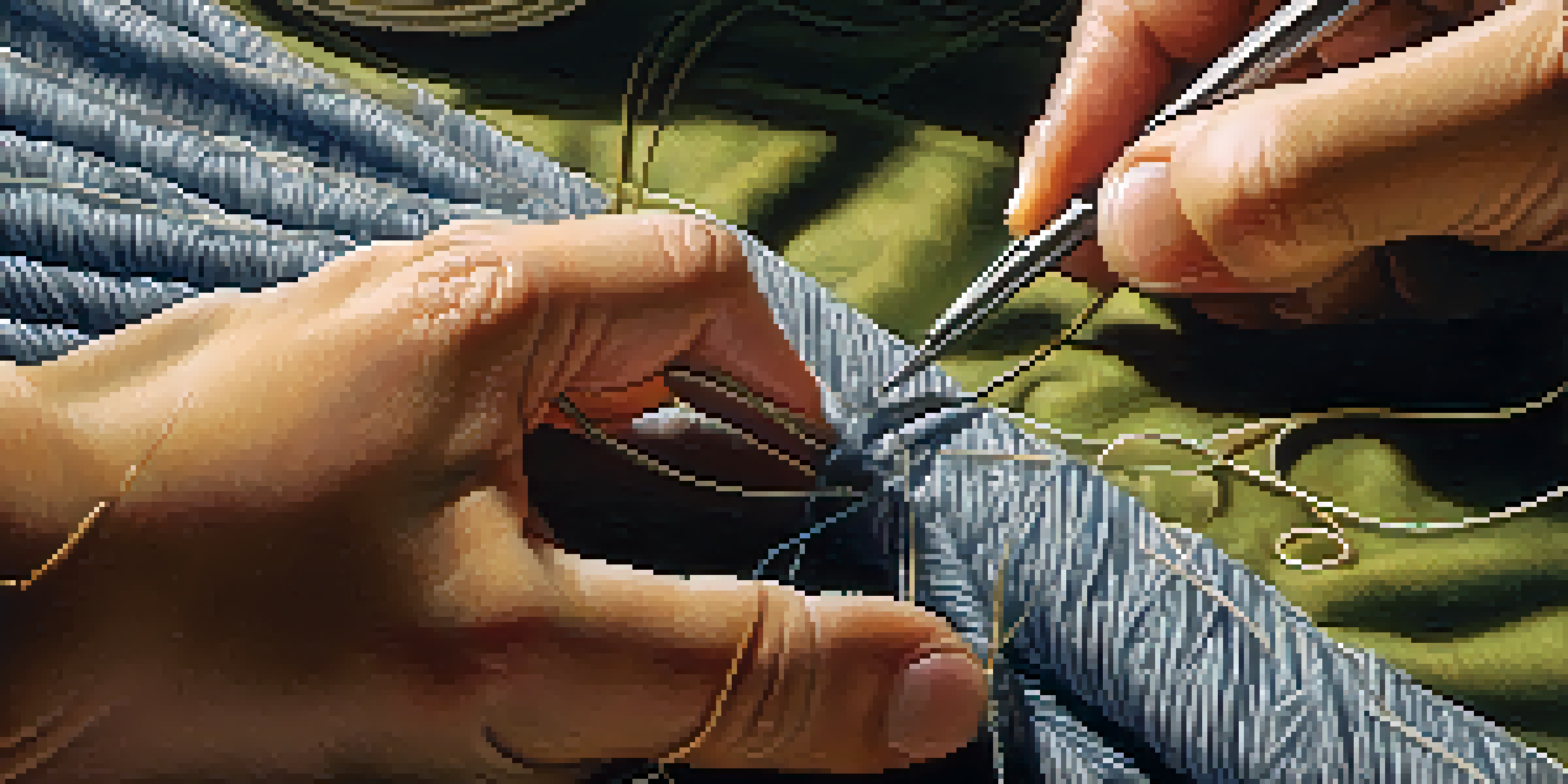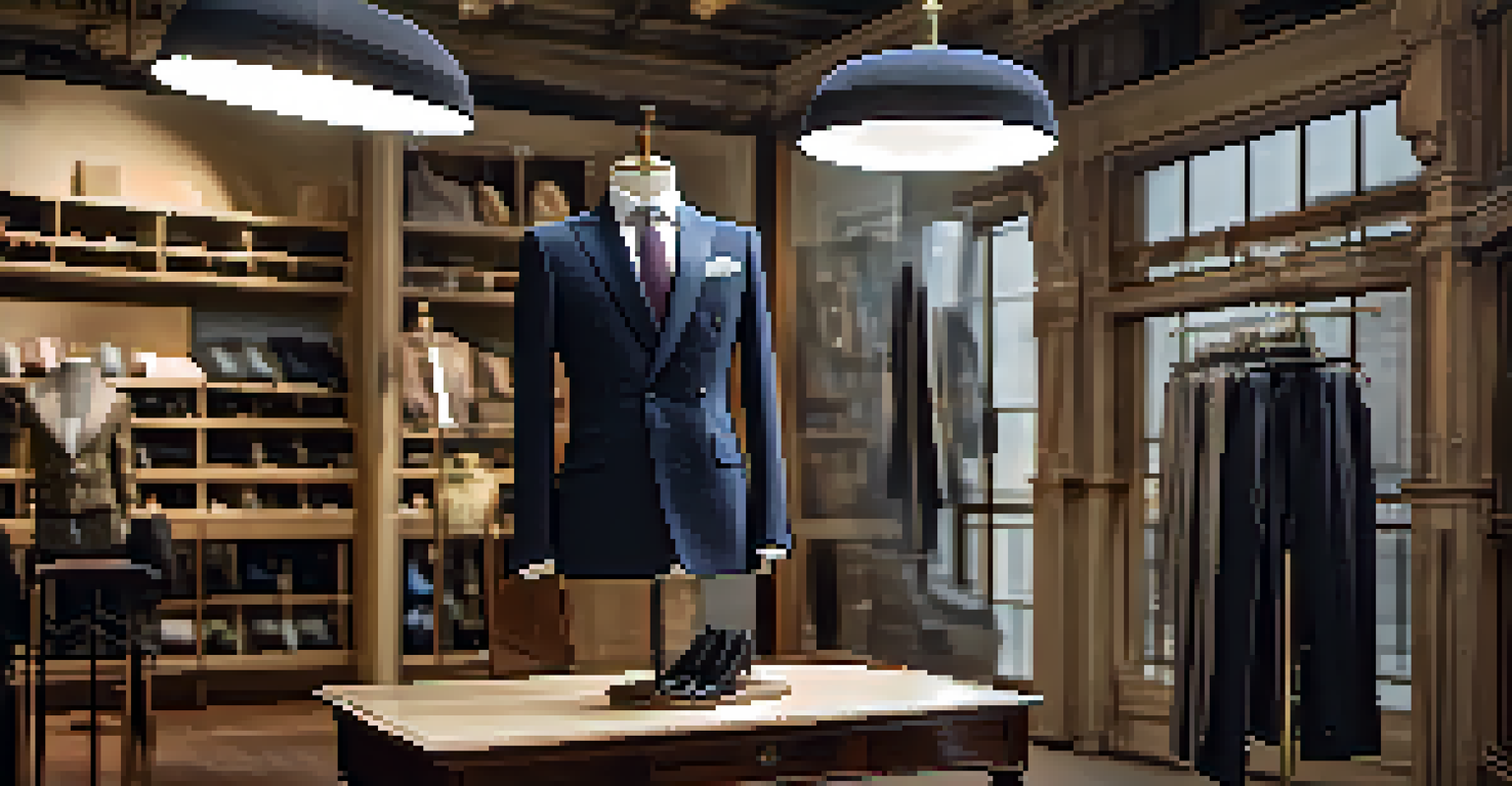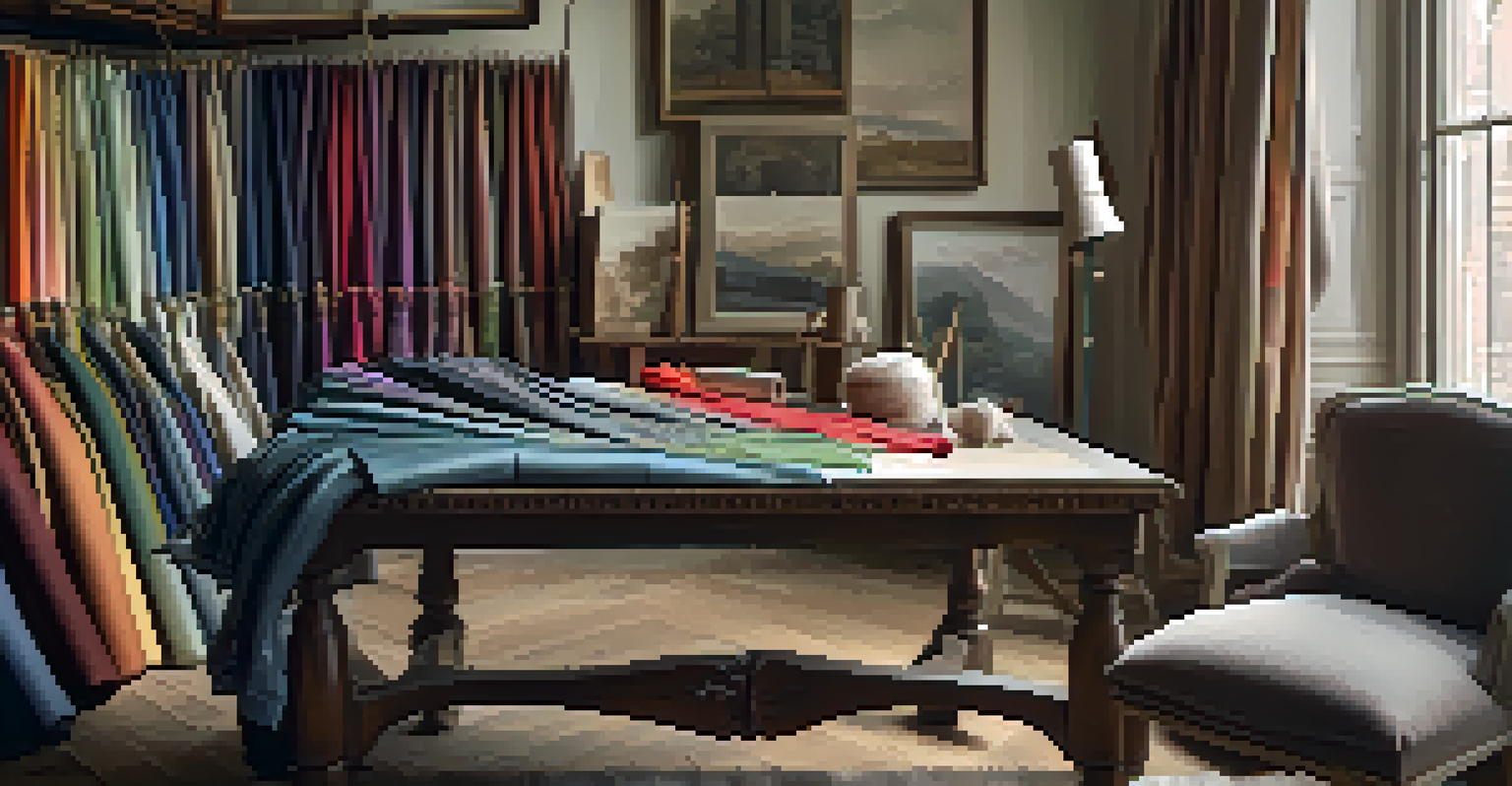The Art of Tailoring: Customization in Luxury Fashion

Understanding Tailoring: A Blend of Art and Science
Tailoring is more than just sewing fabric together; it’s a precise art that combines creativity with technical skill. It involves understanding the human form and how different fabrics behave, allowing for garments that fit like a glove. The craftsmanship behind tailoring is akin to that of a sculptor, shaping each piece to enhance the wearer's silhouette and style.
Fashion is the armor to survive the reality of everyday life.
In luxury fashion, this art form is elevated further, as designers often employ traditional techniques passed down through generations. Each stitch and fold is deliberate, aimed at creating a harmonious balance between comfort and aesthetic appeal. This meticulous attention to detail is what sets tailored clothing apart from off-the-rack options, making it a worthwhile investment for those who appreciate quality.
Furthermore, the process of tailoring often involves a collaborative relationship between the designer and the client. This dialogue ensures that the final product is not only unique but also a true reflection of the wearer’s personality and lifestyle. In this way, tailoring becomes a personal expression, weaving together the stories and preferences of both the client and the craftsman.
The Importance of Fit in Luxury Fashion
Fit is arguably the most critical aspect of tailoring, especially in luxury fashion. A well-fitted garment can enhance one's confidence and make a statement without uttering a word. Consider how a perfectly tailored suit transforms not just the appearance but also the demeanor of the wearer, embodying sophistication and poise.

When clients invest in luxury pieces, they expect nothing less than an impeccable fit. Tailors often take multiple measurements and conduct several fittings to ensure that every aspect of the garment aligns with the wearer’s body. This thorough process elevates the experience, turning the act of dressing into a personal ritual rather than a mundane task.
Tailoring: Art Meets Science
Tailoring blends creativity and technical skill to create garments that fit perfectly and enhance the wearer's silhouette.
Moreover, a good fit can adapt to the wearer's movements, making it functional as well as fashionable. For instance, a tailored blazer not only looks sharp but allows for ease of movement, which is essential for busy professionals. This blend of practicality and style is what makes tailored clothing a staple in luxury wardrobes.
Materials Matter: Choosing the Right Fabric
The choice of fabric plays a pivotal role in luxury tailoring, impacting both the look and feel of the garment. High-quality materials such as cashmere, silk, and fine wool not only elevate the aesthetic but also contribute to the durability of the piece. Each fabric has its own unique characteristics, influencing how it drapes and moves with the body.
Style is a way to say who you are without having to speak.
When selecting materials, tailors often consider the season and occasion, ensuring that the fabric complements the intended use of the garment. For example, lightweight linens are ideal for summer, while heavier wools provide warmth in the winter. This thoughtful selection process ensures that the final product is both practical and luxurious, catering to the wearer’s needs.
Additionally, the rise of sustainable and eco-friendly fabrics has also become a focal point in luxury fashion. Tailors are increasingly sourcing materials that not only look good but are also ethically produced. This shift reflects a growing awareness among consumers who value both style and sustainability, making it an essential consideration in modern tailoring.
Customization: Tailoring Beyond the Basics
Customization in tailoring goes beyond mere adjustments; it encompasses a range of options that allow clients to express their individuality. From selecting the fabric to choosing specific design elements like lapels and pocket styles, each decision contributes to a unique garment. This personalized approach transforms the shopping experience into one that feels special and tailored to the individual.
Many luxury brands now offer bespoke services that allow clients to create one-of-a-kind pieces. These services often include consultations where clients can discuss their preferences and collaborate with tailors to bring their vision to life. The joy of seeing a custom piece come together is a rewarding experience that makes tailored clothing truly special.
Fit is Key in Luxury Fashion
A well-fitted garment not only boosts confidence but is essential in luxury fashion, requiring multiple measurements and fittings.
Moreover, customization can also extend to details like monograms or unique linings, further enhancing the personal touch. These small, thoughtful elements can tell a story or evoke memories, making the garment not just a piece of clothing but a cherished item. In this way, customization elevates the entire concept of luxury fashion, transforming it into an intimate journey.
The Role of Technology in Modern Tailoring
In recent years, technology has begun to play a significant role in the world of tailoring, revolutionizing how garments are designed and fitted. Innovations like 3D body scanning have made it possible to capture accurate measurements quickly, reducing the margin for error. This technology allows tailors to create patterns that align perfectly with the client’s body shape, enhancing the overall fit.
Additionally, digital design tools enable tailors to visualize garments before they are produced. This means that clients can see various design options and modifications in real-time, making the customization process even more interactive and engaging. It’s like having a virtual fitting room at your fingertips, allowing for endless possibilities.
However, while technology enhances the tailoring process, the human touch remains irreplaceable. The intuition and expertise of skilled tailors are essential in interpreting the data and crafting garments that reflect the client’s personality and style. This blend of technology and craftsmanship represents the future of tailoring, where tradition meets innovation.
The Timeless Appeal of Tailored Clothing
Tailored clothing has a timeless quality that sets it apart from fast fashion trends. A well-tailored suit or dress can transcend seasons and styles, making it a staple in any wardrobe. This enduring appeal is rooted in the craftsmanship and attention to detail that goes into each piece, ensuring that it remains relevant and stylish for years to come.
Moreover, tailored garments often hold sentimental value, becoming heirlooms passed down through generations. There’s something special about wearing a piece that was custom-made for you or even a family member, as it carries memories and stories within its fabric. This personal connection enhances the garment's value beyond mere aesthetics.
Customization Elevates Experience
Customization in tailoring allows clients to express their individuality, transforming the shopping experience into a personal journey.
As the fashion landscape continues to evolve, the appreciation for tailored clothing persists. Consumers are increasingly seeking quality over quantity, valuing pieces that are thoughtfully designed and well-made. This shift towards sustainable and timeless fashion underscores the significance of tailoring in the modern world.
Investing in Tailored Fashion: A Smart Choice
Investing in tailored fashion may seem like a significant expense upfront, but it often proves to be a smart choice in the long run. Tailored garments are designed to last, using high-quality materials and expert craftsmanship that withstand the test of time. This means less frequent replacements and a wardrobe filled with pieces that you truly love and wear often.
Additionally, the versatility of tailored clothing allows for easy mixing and matching with other items in your wardrobe. A tailored blazer, for instance, can elevate a casual outfit or complete a professional look, making it a functional addition to any closet. This adaptability enhances the value of the investment, as it can be styled in multiple ways.

Finally, the confidence that comes from wearing well-fitted, tailored clothing is invaluable. When you feel good in what you’re wearing, it reflects in your demeanor and how you carry yourself. This boost in self-esteem is perhaps the most compelling reason to invest in tailored fashion, proving that style is not just about clothing but about how it makes you feel.